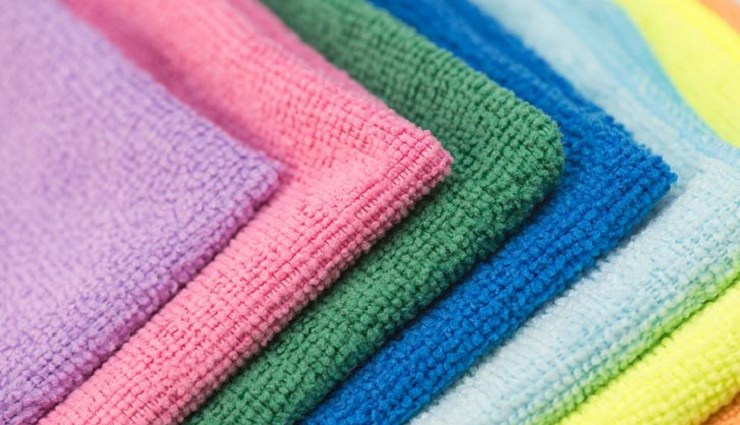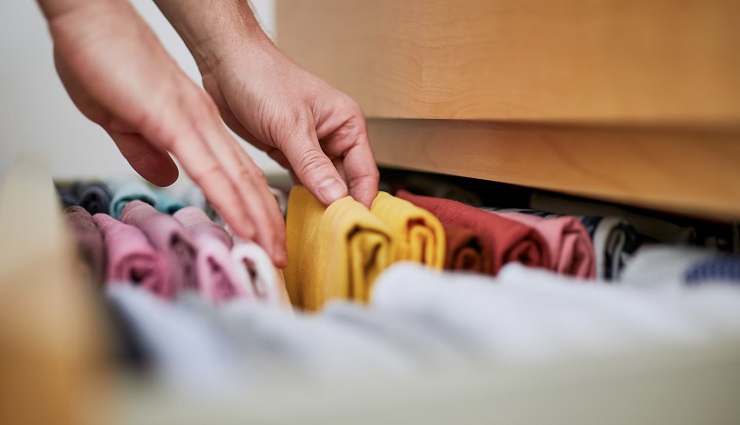Microfiber fabric is a soft and delicate fabric used in various fields, from the production of clothes and shoes to travel equipment and bath towels. This practical cloth can remove pollution, sebum, dust, moisture, and even germs and bacteria from surfaces. If you want to know what microfiber is, how it is produced, and its features and uses, stay with us until the end of the article.
What is microfiber cloth?
Microfiber is a synthetic fabric made of great fibers. The diameter of these fibers is usually less than 10 micrometers, and their denier is less than 0.7, while this number is approximately one denier for a silk thread. Therefore, microfiber is one of the most delicate textile fibers in the world and has a thickness of less than human hair.
Denier is the unit of measurement of fineness and consistency of fibers used in fabric, and it shows the weight of 9000 meters of yarn in grams. The higher the fabric denier, the more thick, solid, and durable it is. For example, nylon with 40 deniers is more robust than nylon with 15 deniers.
The Toray textile company, one of the famous Japanese companies, started the mass production of microfiber cloth for the first time in the 1960s. Toray produced a variety of microfiber fabrics, including Ultrasuede. Ultraswede was one of the first microfibers that became widely popular. Of course, the use of microfiber cloths remained very limited until the 1990s. In the 1990s, Swedish manufacturers began producing various other microfiber materials. After that, microfiber quickly became a popular material in the clothing industry throughout Europe and found other uses in cleaning and industry.
During the 1990s, microfiber became popular in Asia and Europe, and in the early 2000s, the fabric became popular in North America and other parts of the world. Due to its unique features in cleaning, this fabric became the leading textile used in bath towels, kitchen towels, floor washing heads, and other cleaning tools.
About the price of microfiber fabric, we should also say that this fabric is one of the cheapest textiles. Although it is slightly more expensive than the more straightforward types of polyester or polyamide, it is much cheaper than silk, cotton, or other natural fibers. Therefore, you don’t need to spend a lot of money to buy microfiber cloth, and being affordable is one of the positive features of this cloth.
Comparison of microfiber with cotton
Cotton is a natural fiber, but microfiber is made of synthetic materials, usually polyester and nylon. Microfiber is very fine, and its diameter is about one-third of the diameter of cotton fibers.
Cotton is breathable and soft enough not to scratch surfaces, but it also has many disadvantages:
- Instead of collecting dirt and particles, it pushes them forward.
- It is made of organic materials that may become a place to accumulate foul odors or bacteria.
- It dries slowly.
- It leaves lint behind.
Versus microfiber:
- It is very absorbent and can absorb up to 7 times its weight in water. This feature makes it very suitable for cleaning surfaces.
- It has a long life if used and maintained correctly.
- It is lint-free.
According to a US Environmental Protection Agency study, excellent microfiber (with a diameter of 0.38 micrometers) can kill up to 98% of bacteria and 93% of viruses on surfaces using only water. At the same time, cotton can destroy only 30% of bacteria and 23% of viruses. Therefore, microfiber is more effective in killing germs and bacteria.
Microfiber fabric production method
Most microfiber fabrics are a combination of polyester and polyamide (nylon). Textile manufacturers produce these fibers separately and then combine them using heat.
Polyester has a high tensile strength so it can be made into different shapes. The center and core of most microfiber fabrics are made of polyester. These polyester cores are usually star-shaped. Polyamide is inserted into the gaps between the “tips” of these star polyester fibers. The density of polyamide is much lower than polyester and has lower tensile strength. Therefore, polyamide cannot be made into complex shapes, but it is an excellent filler. Polyester forms the structure of microfiber and polyamide, its mass, and volume. In microfiber wipes, polyester is responsible for abrasion, and polyamide is absorbent and increases the thickness of the fabric.
Features of microfiber
Shallow thickness is one of the main features of microfiber. Microfiber is three times thinner than cotton and two times lighter than silk. Its other features are:
- softness and tenderness;
- being antibacterial;
- being hypoallergenic;
- high absorption power;
- breathability;
- Easy washing.
The shallow thickness of the fibers gives the microfiber excellent moisture repellency. For this reason, microfiber towels and clothes dry in a short time. Microfiber does not cause allergies because it does not harbor mites and bacteria. For this reason, this fabric is also suitable for covering some furniture and accessories, such as sofas and armchairs. In addition, microfiber is resistant to stains and does not require special maintenance.
Types of microfiber cloth
1. Waffle weave microfiber
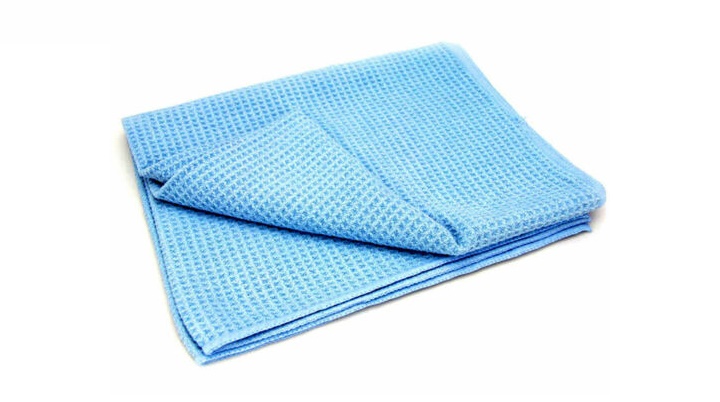
Waffle Texture Microfiber, named so because of its embossed mesh pattern, is very suitable for cleaning glass. This type of microfiber pattern reduces surface contact and increases sliding and friction.
2. Split tissue microfiber
Its fibers are split and separated during production, resulting in countless tiny rings forming on the fabric’s surface. Flat weave microfiber is soft and smooth, but split weave microfiber clings to it when it comes in contact with the skin.
3. Micromodal
Technically, due to the small diameter of its fibers, it is considered a type of microfiber. Micromodal is a 100% polyamide fabric, a softer and more elegant alternative to modal fabric. Micro modal is more flexible and less durable than microfiber fabrics made of polyester and polyamide.
4. Ultrasuede
Ultrasuede is one of the first microfiber products produced, a competitor of natural suede leather. Ultraswid fibers are somewhat more comprehensive than the fibers of other microfiber fabrics. Still, because the diameter of ultrawide fibers is less than one denier, it is considered a type of microfiber.
5. Flat-weave microfiber
It is one of the most durable types of this fabric, but it is not as absorbent as split-weave microfiber. Most of the microfiber clothes and accessories use the flat texture of this fabric.
6. Chenille microfiber
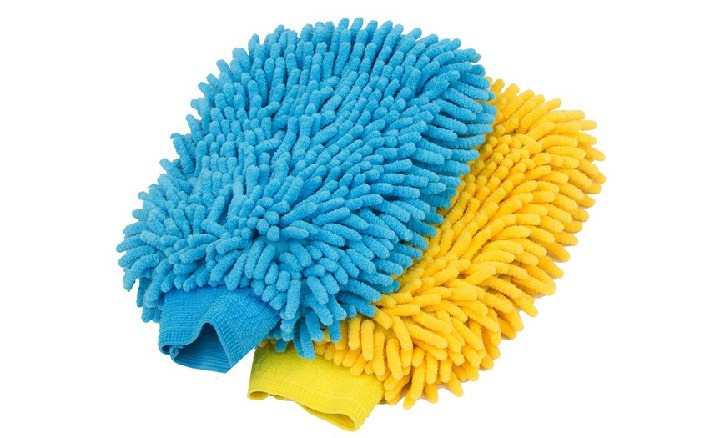
It has thick, finger-like fiber protrusions connected to a thin fabric. This fabric is usually used to produce car wash gloves and is used almost only for cleaning applications.
7. Prolen
Prolen is a brand of microfiber cloth that consists only of polypropylene. This fabric may have high or low elasticity and is somewhat softer than polyester polyamide microfiber fabrics.
8. Terry microfiber
Terry is one of the most common fabric types for towels, and many microfiber towels have a terry texture. This type of microfiber is less used to produce other textiles.
9. Suede microfiber
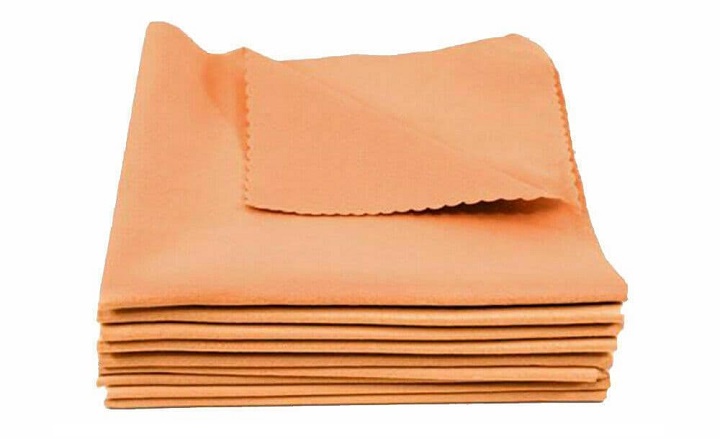
Designed to be as soft as suede with very little lint. This type of microfiber cloth cleans the glasses in the best way. Suede microfiber is also used in many clothing, accessories, and rumbly fabrics.
Microfiber wipes are available in reusable and disposable forms, each with advantages and disadvantages. The use of reusable napkins is more popular. These wipes should be washed after each use, and if used correctly, they can last up to 100 to 1000 washes. In contrast, disposable wipes are usually saturated with cleaning solutions and must be discarded after use.
Applications of microfiber cloth
Although microfiber is primarily used in cleaning products, its unique softness and softness have caused it to be used to produce clothing and accessories. Microfiber is very durable and absorbs and repels water well. The electrostatic properties of this fabric are also excellent for filtration mechanisms. As a result, the use of this fabric for the production of protective face masks has also increased. The following describes the most common benefits of microfiber cloth worldwide.
1. Cleaning
Initially, designers combined polyester fabric with polyamide to create durability and absorbency. Due to the unique design of its fibers, microfiber can absorb more pollution and dirt. According to scientific research, microfiber is also helpful in eliminating dangerous surface germs and viruses.
2. Household
Since microfiber is very absorbent and durable, manufacturers use this material to produce different types of towels (such as bath towels, kitchen towels, and bath towels). Sometimes, microfiber is also used to make bedding and pillowcases because it has exceptional absorbency and softness. Furniture manufacturers sometimes use it to create rumble fabric due to its absorption and impermeability against moisture. Another widely used product made from microfiber fabric is a bedspread.
3. industry
The electrostatic properties of microfiber make it perfect for filtration. As a result, this material is used as industrial filtration fibers for various tasks. Some construction contractors and builders also use microfiber as an insulation material due to its high fiber density.
4. Clothing and accessories
The main characteristics of microfiber, which make it a desirable material for producing clothing and accessories, are softness, durability, and moisture repellency. Microfiber is mainly used to create women’s skirts and jackets and is popular because of its stain resistance. Certain types of microfiber are also close to the category of leather textiles and replace natural or artificial leather for the production of belts, wallets, handbags, and other accessories.
The impact of microfiber cloth on the environment
Although microfibers constitute only a tiny part of the total production of synthetic textiles worldwide, this material has polluting effects during each stage of its use cycle.
Polyester and polyamide production requires various toxic and synthetic chemicals that are difficult or impossible to dispose of properly. During use, the microfiber cloth also introduces plastic microfibers into the water, causes waterways pollution, and plays a role in plastic pollution. When it reaches the end of its useful life, it fills landfills or becomes polluting plastic, as polyester and polyamide are not biodegradable.
you say
Do you think we should ignore its environmental damage due to microfiber’s uses and positive features? Or should we limit its consumption and use natural fibers and textiles as much as possible?
